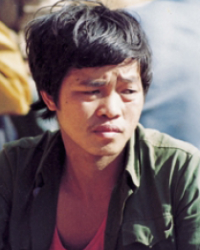Mang in Vietnam

Photo Source:
Copyrighted © 2026
Asia Harvest All rights reserved. Used with permission |
Send Joshua Project a map of this people group.
|
| People Name: | Mang |
| Country: | Vietnam |
| 10/40 Window: | Yes |
| Population: | 4,900 |
| World Population: | 5,500 |
| Primary Language: | Mang |
| Primary Religion: | Ethnic Religions |
| Christian Adherents: | 1.00 % |
| Evangelicals: | 1.00 % |
| Scripture: | Translation Started |
| Ministry Resources: | No |
| Jesus Film: | No |
| Audio Recordings: | Yes |
| People Cluster: | Mon-Khmer |
| Affinity Bloc: | Southeast Asian Peoples |
| Progress Level: |
|
Introduction / History
The Mang language was unknown until recently. Linguists have found it to be particularly interesting. Though they have determined it is a Mon-Khmer language, Mang is included in the Palaungic language group by some and is a separate group of Mon-Khmer for others.
The Mang people inhabit a mountainous area between the Da and Nam Na rivers in northwest Vietnam's Lai Chau Province. The Mang live in the four districts of Sin Ho, Muong Te, Phong Tho and Muong Lay. In 1997, a mere 408 Mang people lived in the remote and backward mountains of southern China. The little-known Mang inhabit thick forests and mountain slopes in the Mengla District of Jinping County, near the Vietnam border. Their homes are a two-hour trek from the nearest road.
What Are Their Lives Like?
The Mang in Vietnam live in the same area as the Thai, Hani and Hmong. Despite being influenced by these groups for a long time, the Mang have retained their own culture. The Mang has a rich collection of poems, songs and traditional tales, including the soong muang, an epic that details the Mang's struggle to survive by slash-and-burn agriculture.
The neighbors of the Mang despise them and call them Mang U, which means "cowardly Mang'. Mang houses are built on stilts and have thatched straw roofs. On the top of their roofs are fixed two carvings of dragons—common among Mon-Khmer speaking peoples. They believe these dragons can protect them from harm and disease.
In the past, at the onset of puberty, young Mang girls were tattooed around their mouths for adornment. This custom is still seen in more remote Mang settlements.
The Mang's diet consists primarily of rice and corn. They also raise pigs and hunt for rabbits, mice, and occasion-ally small deer. They hunt frequently because they have little food in their village.
On the day of a Mang wedding, friends and relatives of the groom arrive early at the bride's home and stage a mock kidnapping. They carry her away. They believe the struggle will ensure a better marriage for the couple.
When a Mang woman is about to give birth, she is required to leave her home and live in a temporary hut in the forest. The Mang believe the village will be defiled if she gives birth in her home. She is required to cut the umbilical cord herself and to stay in the hut for about three weeks, preparing her own meals. Only then is she allowed to return home.
Each Mang person has five or more family names. The names are derived from the names of sacred animals. Each lineage has its own totem. Chiefs, called mon dam, are assigned to each clan. The chief is responsible for all affairs of his clan, including the management of education, culture, economic and religious events.
What Are Their Beliefs?
The majority of Nguon are animists. They worship a host of gods, deities and spirits, who they believe can bless and protect their communities.
What Are Their Needs?
The Nguon people need to know that God can provide for all their spiritual and physical needs according to his riches and glory.
Prayer Points
Pray that a movement toward Jesus Christ will begin.
Pray they would see Christ as the Creator God that they have yearned to know for many centuries.
Pray for the hidden Mang people of northern Vietnam and southern China to have a Jesus-oriented revival that will bless their communities.
Pray God would raise up workers with a vision to reach their isolated villages for Christ.
Ask God to open the hearts of the Mang to the gospel.
Pray the deep fear the Mang have of neighboring ethnic groups would not be a barrier against them receiving the gospel.